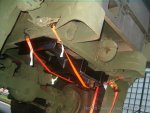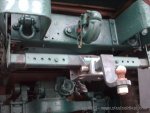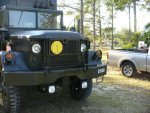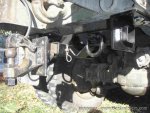russ81
New member
- 222
- 0
- 0
- Location
- cambridge, ohio
Yes, cadmium, zinc electroplate, yellow zinc chromate, hot dipped galvaized, all plating works as a lubricate. I learned this lesson the hard way assembling a pedestal crane with 1" grade 9 bolts, and was busting them in two at only 75% torque load.
I ALWAYS lubricate hardware EXCEPT when using lock nuts. When using the lock nuts, either nylock, crimped, or castleated, you never want to use lubrication. The plating is enough lubricate, and lock nuts are a one-time use fastener.
When you get into the really technical aspect of hardware and fasteners the TYPE of lubrication makes a big difference. This info is really not important for use here, but just wanted to throw that out there.
The big thing is to use a lubricant that is compatable with the application. Use engine oil to lubricate bolts going internal of the engine, transmission fluid or grease that will be used in the transmission, ect... For external (frame, exhaust, lug nuts) nothing beats a good quality Never-Sieze. Lubricating hardware is a lot more important then most people realize, but none of it is more important then proper torquing, and the proper torquing technique.
I ALWAYS lubricate hardware EXCEPT when using lock nuts. When using the lock nuts, either nylock, crimped, or castleated, you never want to use lubrication. The plating is enough lubricate, and lock nuts are a one-time use fastener.
When you get into the really technical aspect of hardware and fasteners the TYPE of lubrication makes a big difference. This info is really not important for use here, but just wanted to throw that out there.
The big thing is to use a lubricant that is compatable with the application. Use engine oil to lubricate bolts going internal of the engine, transmission fluid or grease that will be used in the transmission, ect... For external (frame, exhaust, lug nuts) nothing beats a good quality Never-Sieze. Lubricating hardware is a lot more important then most people realize, but none of it is more important then proper torquing, and the proper torquing technique.





